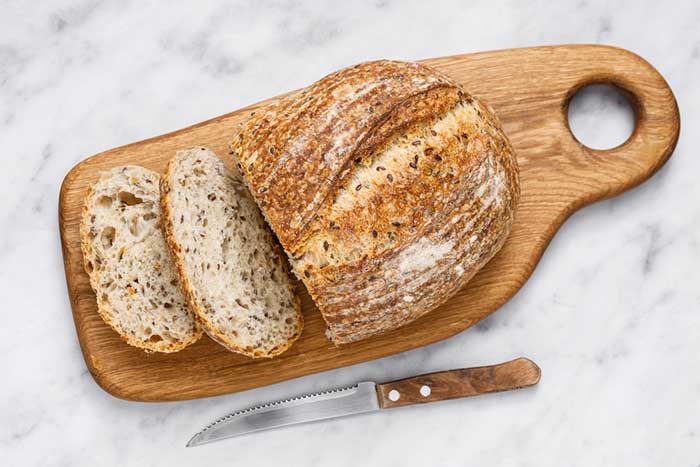Fix watery soup with our nine easy and effective ways to thicken potato soup. From cream to corn flour, here are the best ways to make it thick and filling.
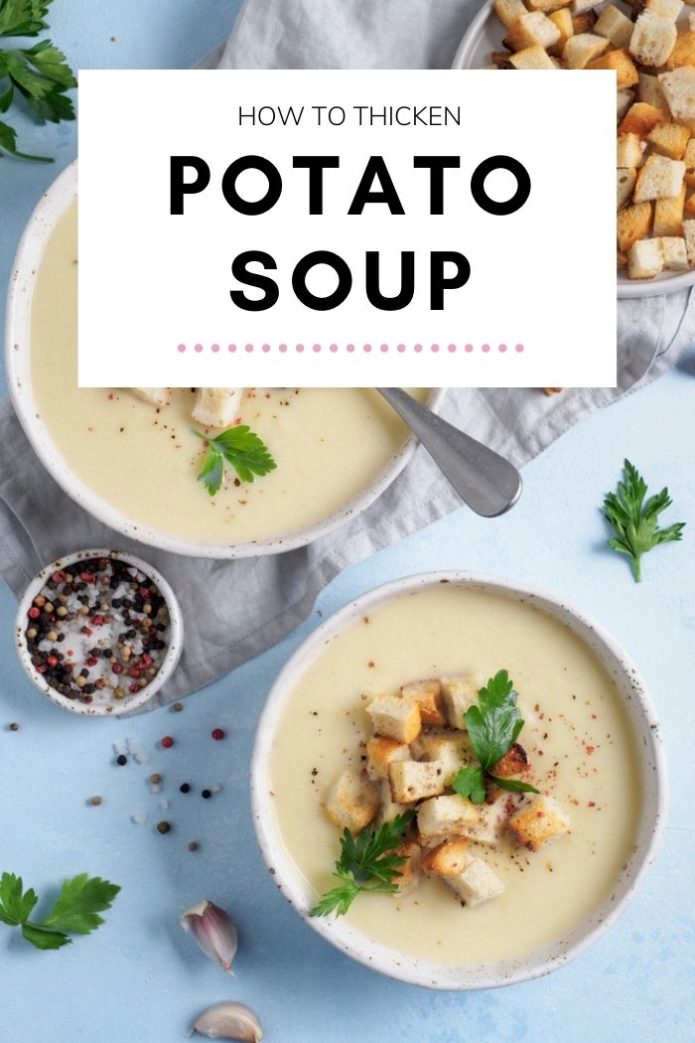
A bowl of creamy potato soup is the perfect winter warmer comfort food. There is nothing more satisfying in the winter than a dish that’s loaded with nutritious vegetables and hearty toppings.
However, all these vegetables can result in excess water, leading to a thin and watery soup. The good news is that help is at hand! These nine easy thickening agents will help you avoid disaster and serve up a hot bowl of filling stew. Here’s how to thicken potato soup.
All-Purpose Flour
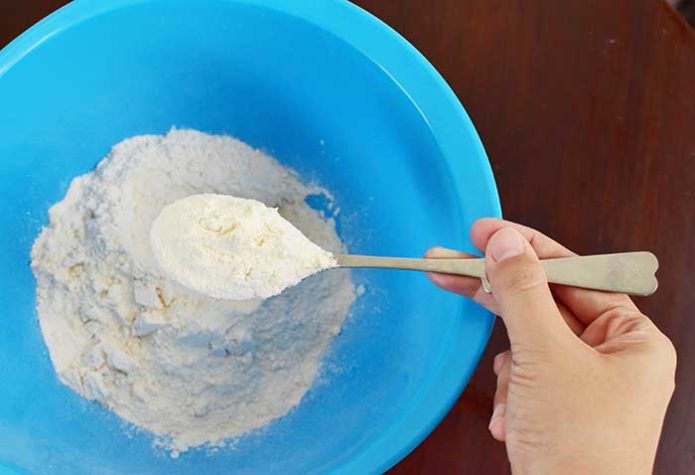
Adding flour to soups or stews is a thickening method that’s lasted for centuries thanks to the speed at which it takes effect. An added advantage is that, because potato soup is so thick and often loaded with ingredients, the soup is robust enough to withstand the added flavor of all-purpose flour.
The disadvantage of this technique is that raw flour can cause digestive problems for some people, and all-purpose flour is not suitable for people on gluten-free or low-carb diets.
To thicken your potato soup using flour, whisk together one tablespoon of flour with two to three tablespoons of the soup in a separate bowl. Mix them well to remove any lumps, creating a thick and smooth slurry, and incorporate into the soup. Allow it to simmer for a few minutes before assessing if you need to add more flour or not. Not only can adding too much flour make your soup too thick, but it could also start to affect the taste.
Potato Starch
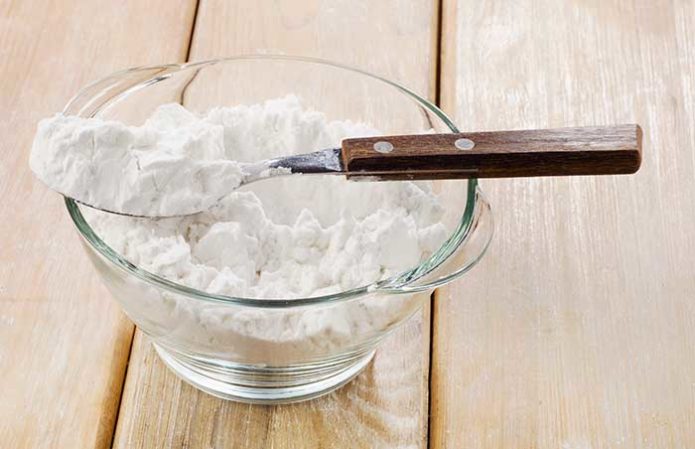
Potato starch is an excellent thickening agent for soups because it doesn’t impart any flavor on your dish. Available in ground form, it’s quick and easy to apply to dishes as and when you need to. It’s also inexpensive, so you can bulk buy and always have some at hand for your soup batch cooking. High quality potato starch is gluten-free, meaning it can be added to vegetable and keto soups alike.
Be careful though, the lack of gluten in potato starch means that it can be fragile under high heat and not absorb moisture effectively. Ensure that you add it to your soup at low heat and a slow simmer.
To use it, make a paste in a separate bowl and then mix it in. The paste can be made using the potato starch and water, using a ratio of 1 cup of water to 5 tablespoons of potato starch. Since this is a thickening agent, it’s essential to make sure that you add a little and see how the soup is thickening. If it isn’t thick enough, you can add more, but when it’s too thick, that’s a different story with another more complex solution.
Potatoes
The prominent flavor you expect to pop up from potato soup is potato flavor. And what better ingredient to give you this flavor than the potato itself. You can add potatoes to your soup to make it thicker and enrich the flavor of the dish. This is one of the more traditional ways to thicken a soup, perhaps because it’s one of the most logical things to do.
To use potatoes, remove some of them from the soup, mash them or blend them so that you end up with a paste. If you feel like this will upset the balance of your potatoes in the stew, you can boil fresh potato and then mash or blend those potatoes to make a paste to thicken the soup. To make the paste, use milk to thin them out and also make sure they are creamy. You may also add butter, salt, and pepper to taste.
Cornflour
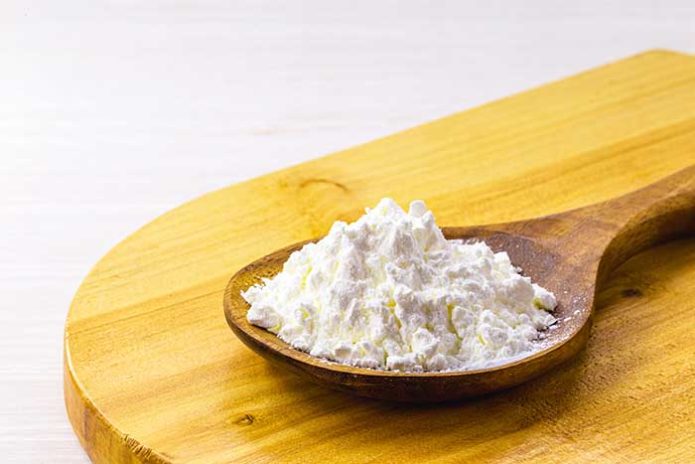
Cornflour is often used in the same way that flour is used as a thickening agent. It is a slightly deceptive ingredient. It quickly thickens, and this means that you also need to use it wisely. It’s best to mix a little in a bowl aside and then mix in a little at a time. At first, you may think it is not thick enough, but after some time of cooking it, you will find it thickening fast.
You want the consistency to be thin enough but also not watery. You also want it to be thick but not too pasty. You must make sure that all the particles are nicely dissolved. The trick to the proportions to use here is to use cornflour sparingly.
Cream or Yogurt
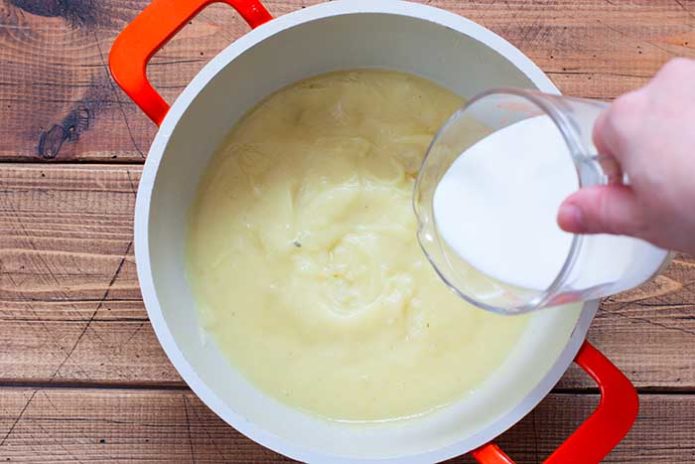
Cream or yogurt are common soup thickeners that also add a bit of flavor to the mix. You can use a spoonful at a time and see what effect it will have on the soup and if it gives you the thickness you desire. The cream or yogurt needs to be added when you are done cooking the soup to avoid splitting.
Butter & Flour Paste
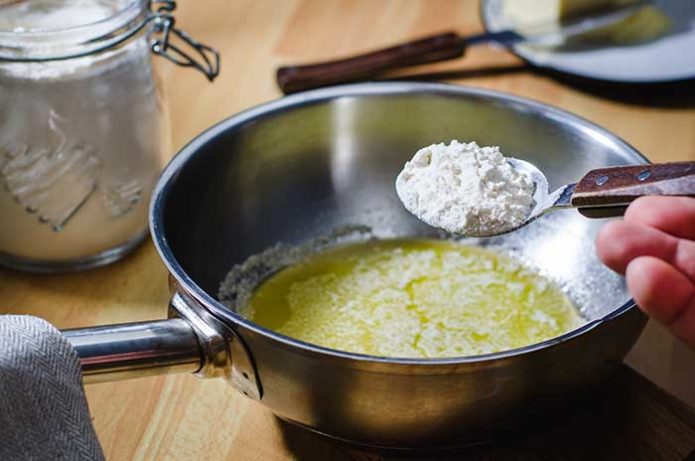
Another option that you could use to thicken potato soup is butter and flour paste. This option can become slightly bland, so you must season it adequately. In a separate bowl, make the paste. To make this paste, you can mix 2tsp of flour with 2tsp of softened butter.
As the soup simmers, begin slowly adding the paste. As you heat it, the soup will soak up the creaminess of the butter and, at the same time, thicken because of the flour. It also doesn’t hurt to have some seasoning. Flour can be bland, so it helps to add seasoning to it.
Stale Bread
You can also use bread to thicken your potato soup. Break up pieces of bread that you will throw into the soup. But first, make sure that the bread doesn’t have too much of an overpowering flavor. Otherwise, you will have numerous unintended flavors in your soup.
The first thing that you will need to do is soak the bread to soften it to blend it. The great thing about bread is that it will thicken the soup without changing the flavor or the taste. Use as much of the blended bread as you think you need to give your soup the desired consistency.
Lentils or Rice

You can also use blended lentils and rice to thicken your soup and add depth to the soup. You will still need your seasoning, though, so that you don’t end up with a bland dish. You can use a handful of lentils or rice, add it to the soup and allow it to simmer. As the soup simmers, in about 30minutes, the lentils or rice begins to break down and therefore release starch which thickens the soup.
Reduction
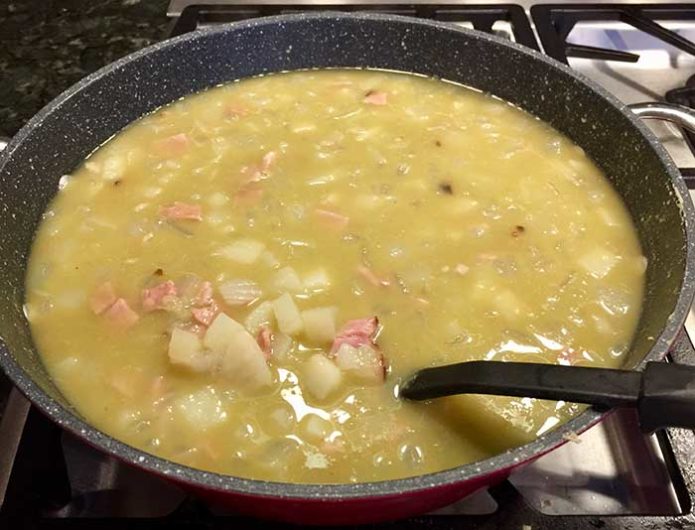
The reduction method involves letting the soup burn down to where the liquid is evaporated and the potatoes are left. It’s often the go-to option if you don’t want to add more ingredients because it involves simmering the soup for a longer period. You will need to do this on the stovetop.
As the soup simmers, the potatoes will become softer, and the soup will become thicker. However, using this method means that you need to be prepared to have softer potatoes than usual. And you also need to keep a watchful eye over the pot.



